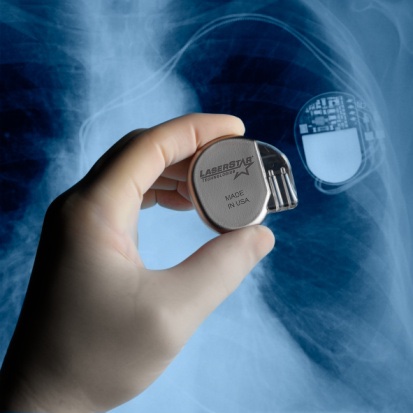 When one thinks of welding, one tends to think of industrial spaces. While laser welding has revolutionized the manufacturing space, one of its biggest impacts has been in fields which require precision, accuracy, and versatility. When it comes to medical devices, laser welding has played a significant role in improving their consistency and quality while lowering production costs.
When one thinks of welding, one tends to think of industrial spaces. While laser welding has revolutionized the manufacturing space, one of its biggest impacts has been in fields which require precision, accuracy, and versatility. When it comes to medical devices, laser welding has played a significant role in improving their consistency and quality while lowering production costs.
If you’re looking to understand a bit more about how laser welding plays a role in medical manufacturing, we’re sharing some of the basics. It’s worth considering, as well, how these attributes can contribute in other fields. For now, the medical field is making the most of leveraging technology to help patients and improve outcomes.
Quick Links
- What is Laser Welding?
- Welding Challenges in the Medical Field
- Medical Applications for Laser Welding
- How Laser Welding Benefits Medical Technology
What is Laser Welding?
Laser welding is the process of joining two materials or objects together through the use of a high-power laser beam. The beam melts the materials and allows them to be joined without the need for a filler. When it comes to medicine and the medical field, laser welding is used to help produce a wide variety of devices including both surgical tools, implants, and prosthetic devices.
Welding Challenges in the Medical Field
The biggest challenge to welding in the medical field involves the reality that some of these devices will be implanted into the human body and/or be required to work in harmony with human biology and physiology.
Because there is a very significant risk to a human body rejecting an implanted device, as it’s a foreign object, any device used for such purposes must be carefully crafted. The same is true for size and functionality or mobility which means, typically, laser welding machines must have multiple axes to enable the complex welding demanded by medical devices.
Again, because of the application, one consideration when it comes to welding medical devices is that the materials cannot be compromised by heat. More traditional welding methods, like TIG, can damage or warp sensitive parts as well as impact surface coatings or engravings.
Additionally, medical welding typically requires immense precision that is just not possible with traditional welding methods. Those same methods also often require pre and post processing that can slow the process.
Finally, medical manufacturing has tight controls on processes and requires detailed and robust reporting regarding those processes. Precise reporting, much like precise welding, is complicated by more traditional welding methods which are harder to control.
Medical Applications for Laser Welding
Much like laser welding in dentistry, laser welding in the medical field has remarkably diverse applications and requires the ability to weld both plastic and metals suitable for implantation and more.
One application for laser welding is in plastic welding, especially where tight and precise seals are needed. These applications include:
- Filtering elements
- Diagnostic cartridges
- Products requiring plastic tubing (catheters etc.)
- Blood-analysis-device parts
- Cardiac devices
- Wearable devices
Of course, welding metals is also important in the medical field and sees some crossover from plastics as well, especially in the device realm. Of course, a good number of these applications include electronics that enable remote patient monitoring and lab capabilities as well. Other applications include:
- Stent assemblies
- In-vitro diagnostic devices
- Implants
- Drug delivery systems
- Tissue-engineering applications
- Chip devices
- And more
 How Laser Welding Benefits Medical Technology
How Laser Welding Benefits Medical Technology
As noted above, sometimes medical technology involves complicated welds that could not be performed in any other way. Similarly, a good portion of modern medical devices include electronic elements like chips, which require low heat and precision welding. These are just among some of the benefits of laser welding in the medical field.
Other benefits include:
- Flexibility and versatility (in terms of physical welding as well as materials)
- Precision and control in terms of accuracy and depth
- Consistent and repeatable welds
- Capable of high volume production
- Low-heat makes it ideal for heat sensitive applications
- Clean seams for aesthetics and functionality
- Capable of producing hermetic seals
- More cost effective and faster than traditional methods
These are just a few of the benefits of laser welding to the medical field and as laser welding techniques improve so will the ability to transform medical applications.
Ready to discuss how LaserStar can help you find the right laser welder for your medical applications? Get in touch with our sales team today and let’s start exploring the options and possibilities.

